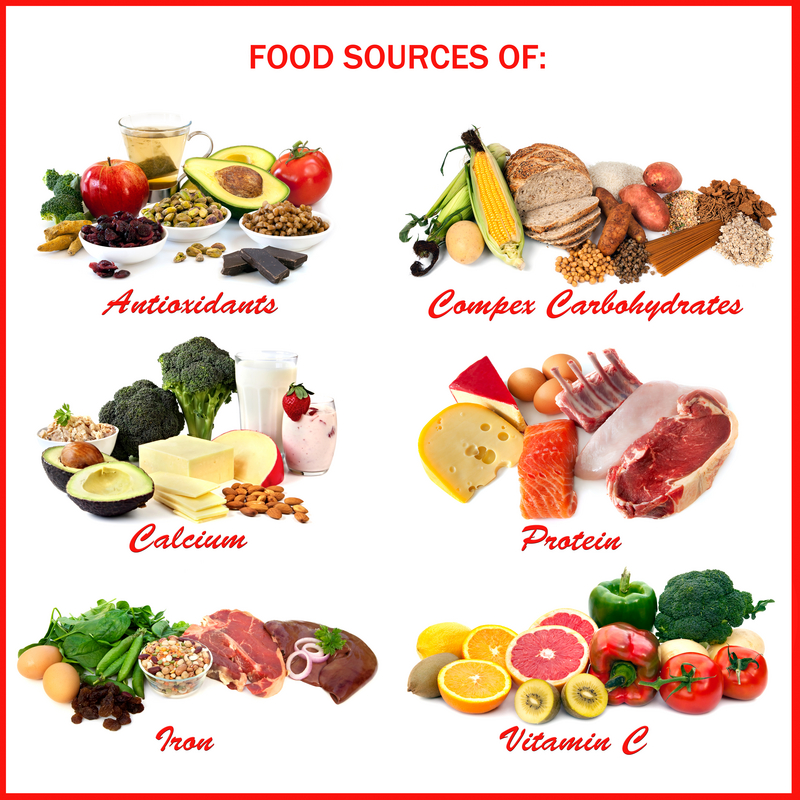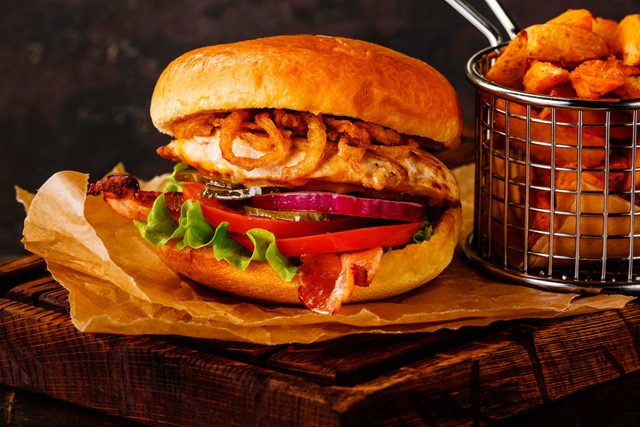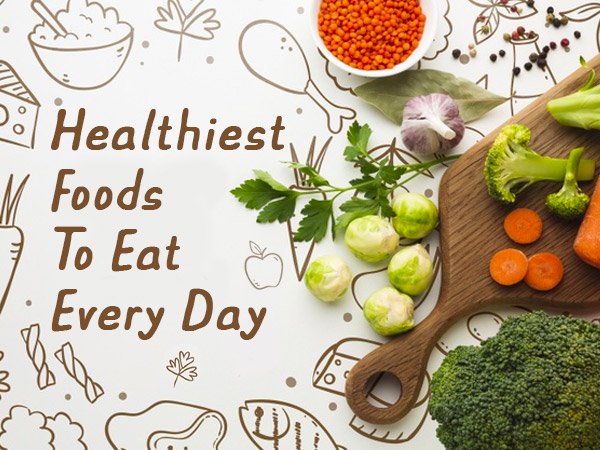
We are told processed meats are good for us, but they aren't. These meats contain a lot sodium, saturated fats, artificial sweeteners, and other harmful ingredients. These chemicals are very unhealthy and have no nutritional value. They may contain chemicals like artificial flavorings or sweeteners. These ingredients have been found to be dangerous for our health.
The USDA recommends that ground meat be eaten within two days of being purchased or frozen. Ground meat can contain bacteria that can be mixed and cause food poisoning. Although it might seem tempting to eat ground steak right away, this is not a good idea. It is possible for bacteria to grow and multiply in food, making it even more dangerous to eat. You should cook your meat properly before you start to prepare it.
Low-fat foods are not recommended. Low-fat versions are often filled with unhealthy ingredients, including added sugars and vegetable oils. These products may look similar to full-fat ones, but they lack nutritional value and taste. Natural sweeteners should be preferred. These are safe and contain no calories. Just make sure you don't eat processed or fast foods!

The problem with processed meats is that they are laden with sodium and other additives. High-fructose corn sugar, for instance, contains a high amount of sugar. It is also loaded in nitrates. These have been linked for a higher chance of cancer. It's easy to forget that pasteurization has killed good bacteria in milk. It isn't worth the extra calories, fats, and salt.
You can eat raw apples but they are not good for you. These fruits' skins and peels are difficult to digest. Although they are rich in potassium as well as folic acid they shouldn't ever be eaten raw. Avocados are best consumed as pure fruit. These fruits and vegetables can be compared to candy bars. They should not be eaten raw. It's better to cook them.
Pretzels are a typical midtown snack in New York City. Cara Walsh, a nutritionist says these carbs are full of sugar and have no nutritional value. These carbs can cause people to eat more of them, which increases the risk of developing serious health problems. They are also not good for your body. It can however be a good source of calories.
You should avoid certain foods. The sodium and fat in processed meats is high. Too many of these foods can lead to blood vessel damage. Prepackaged meals should be avoided, as well as processed meats. They are high on sodium and contain sugars, preservatives, and preservatives. Whether they are frozen or not, they can be highly unhealthy. These meals are highly processed and high in calories.

Additionally, processed meats should not be eaten. They can be high in sugar, transfats, and other harmful ingredients that are linked to many diseases. Selecting 100% organic meat is a good option. The latter is recommended for people with certain health concerns. You can eat a variety of vegetables and fruits that are healthy, but you should stay away from them.
Hot dogs are not something you should eat. They are dyed with meat scraps and come in artificial colors and flavors. Pickled feet made from chopped hooves are soaked and preserved in brine. Chitlins can be described as deep-fried intestines from pigs. Spam is a delicacy, made from pork bits that are wrapped in gelatin. You should avoid eating other foods.
Fried foods are also dangerous. These foods contain high levels of sodium as well as saturated fat. So, it's better to stick to the natural type. Some people may not be aware that flavored and low-quality food are harmful. Also, poor food choices can cause weight gain, which can put pressure on your joints. Sugar and salt are both "usual suspects". Even though these foods look great, they are actually bad for the heart.
FAQ
What is the difference among a virus or a bacterium and what are their differences?
A virus, a microscopic organism, is incapable of reproducing outside its host cell. A bacterium is a single-celled organism that reproduces by splitting itself in two. Viruses have a very small size (about 20 nanometers), while bacteria is larger (up to one micron).
Viruses can be spread by contact with bodily fluids containing infected substances, such as saliva, urine and semen. Bacteria are often spread via direct contact with contaminated surfaces or objects.
Viruses may enter the body through cuts, scrapes. bites, or any other break in the skin. They can also be transmitted through the eyes, nose, mouth, ears, rectum, and anus.
Bacteria can get into our bodies through cuts, scrapes and burns, insect bites, or other skin breaks. They can also enter our bodies from food, water, soil, dust, and animals.
Both bacteria and viruses cause illness. However, viruses cannot reproduce within their hosts. They infect only living cells, causing illness.
Bacteria can grow in their hosts and cause disease. They can infiltrate other parts of the body. Antibiotics are needed to eliminate them.
Why does weight change as we age?
How do you know if your bodyweight changes?
Weight loss occurs when there is less fat than muscle mass. This means that calories must be consumed at a rate greater than energy. A decreased level of activity is the main cause of weight loss. Other reasons include poor eating habits, stress, hormone imbalances, certain medications and illness. Weight gain is when there are more calories than muscle mass. It occurs when people eat more calories than what they use in a given day. The most common causes are overeating, increased activity, hormonal changes, and excessive calories.
Our bodies lose weight mainly because we eat less calories that we burn. Regular exercise increases metabolism, which means that we burn more calories per day. But this doesn't guarantee that we'll lose weight. All that matters is whether we're losing weight or gaining muscles. Weight loss is possible if you burn more calories than you consume. But if we're consuming more calories than we're burning, then we're actually storing them as fat.
As we age we tend to be slower in moving and thus we don't move nearly as much. We also tend eat less than we used to. This is why we tend to gain weight. On the other hand, we have more muscle mass and look larger than we actually are.
If you don't weigh yourself every week, it's impossible to determine how much weight has been lost. There are many different ways to measure your weight. There are many ways to measure your weight. You can check your waist, hips, thighs, arms and legs. Some people prefer using bathroom scales and others prefer tape measure.
For a better track of your progress, try to weigh yourself once per week and measure your waistline once every month. You can also take photographs of yourself every few years to track how far your progress has been.
You can also find out how much you weigh by looking up your height and weight online. For example, if you're 5'10" tall and weigh 180 pounds, you'd probably weigh 180 pounds.
What are the 7 best tips to lead a healthy, happy life?
-
Take care of your health
-
Exercise regularly
-
Good sleep
-
Make sure to drink plenty of water.
-
Get enough rest
-
Be happy
-
Smile often
Statistics
- According to the Physical Activity Guidelines for Americans, we should strive for at least 150 minutes of moderate intensity activity each week (54Trusted Source Smoking, harmful use of drugs, and alcohol abuse can all seriously negatively affect your health. (healthline.com)
- According to the 2020 Dietary Guidelines for Americans, a balanced diet high in fruits and vegetables, lean protein, low-fat dairy and whole grains is needed for optimal energy. (mayoclinichealthsystem.org)
- WHO recommends reducing saturated fats to less than 10% of total energy intake; reducing trans-fats to less than 1% of total energy intake; and replacing both saturated fats and trans-fats to unsaturated fats. (who.int)
- nutrients.[17]X Research sourceWhole grains to try include: 100% whole wheat pasta and bread, brown rice, whole grain oats, farro, millet, quinoa, and barley. (wikihow.com)
External Links
How To
27 Steps to achieve a healthy lifestyle when your family only buys junk food
Cooking at home is the most popular way to eat healthier. This is difficult for people who don't know how to cook healthy meals. This article will show you how to make healthier eating choices at restaurants.
-
Look for restaurants that offer healthy choices.
-
Before you order any meat dishes, make sure to order salads or vegetables.
-
Ask for sauces without added sugar.
-
Avoid fried items
-
Request grilled meats instead of fried ones.
-
You shouldn't order dessert unless it is absolutely necessary.
-
Be sure to have something other than dinner.
-
Slowly chew and eat.
-
When you eat, drink plenty of fluids.
-
Do not skip breakfast, lunch or dinner.
-
Every meal should include fruit and vegetables.
-
Consider drinking milk instead of soda.
-
Try to stay away from sugary drinks.
-
Reduce salt intake.
-
You should limit how often you visit fast food restaurants.
-
If temptation is too strong for you, invite someone to be your friend.
-
Don't let your children watch too much TV.
-
Do not turn on the television while you eat.
-
Avoid energy drinks
-
Regular breaks from work are important.
-
Exercise early in the morning.
-
Every day, exercise.
-
Start small and build up gradually.
-
Set realistic goals.
-
Be patient.
-
You can exercise even when you don't feel like doing it.
-
Positive thinking is key.